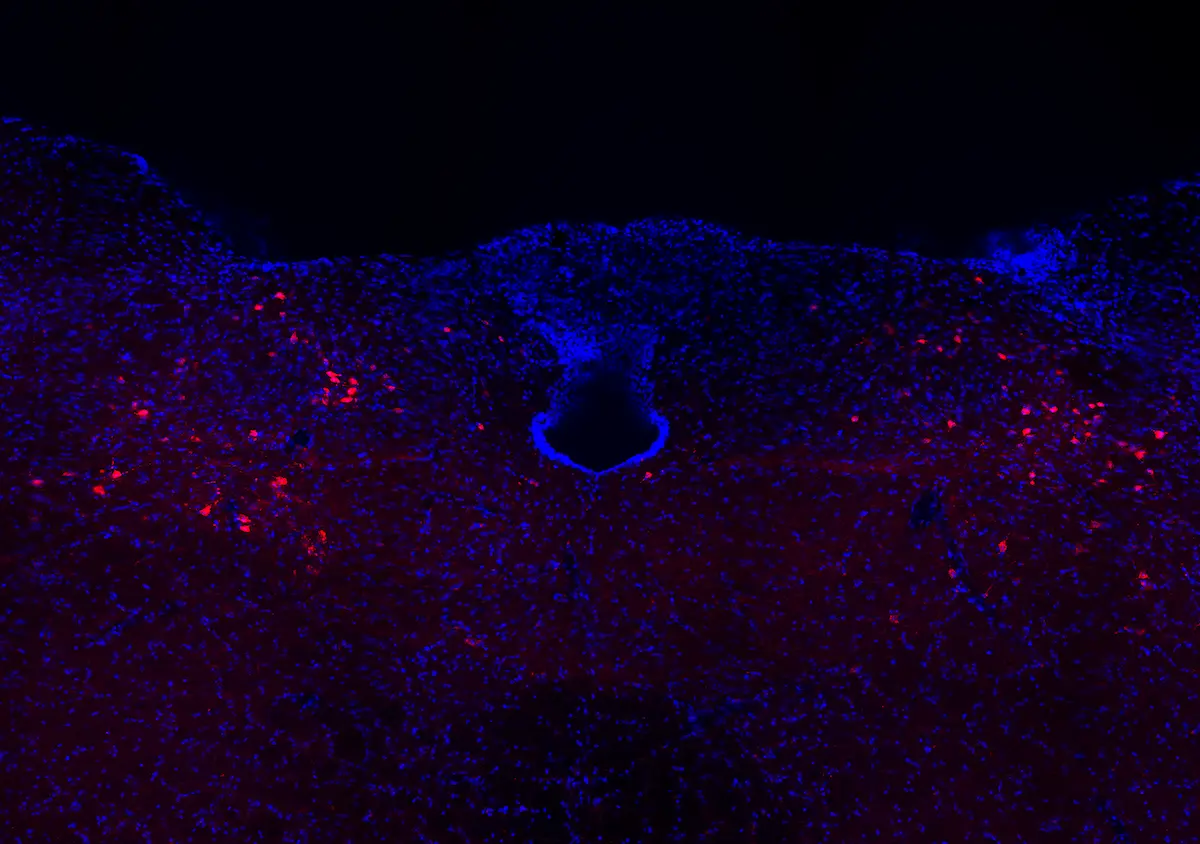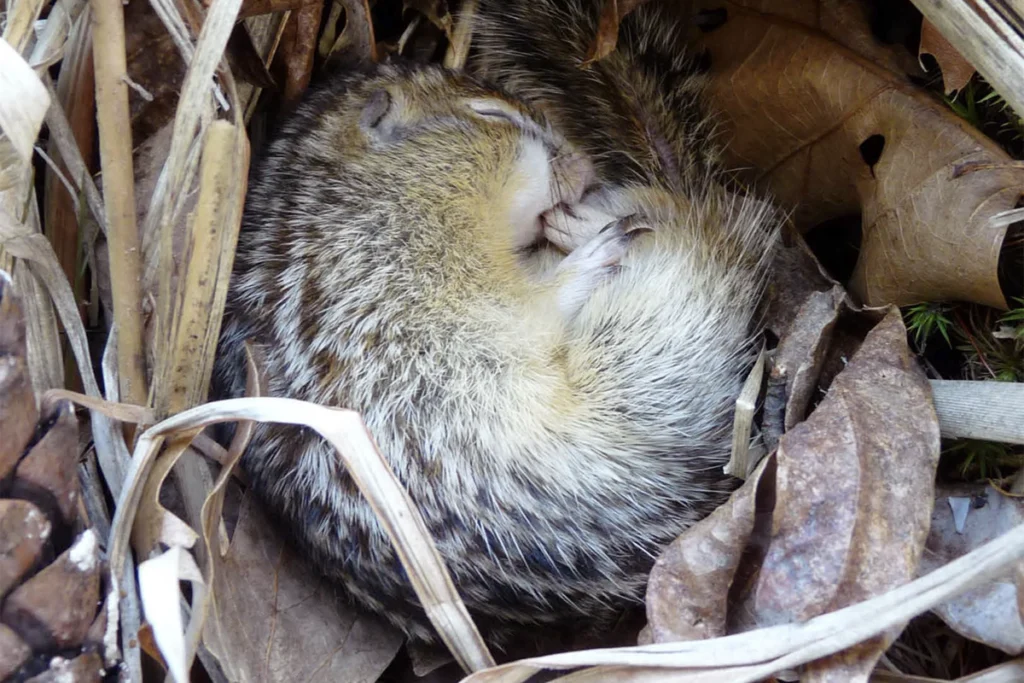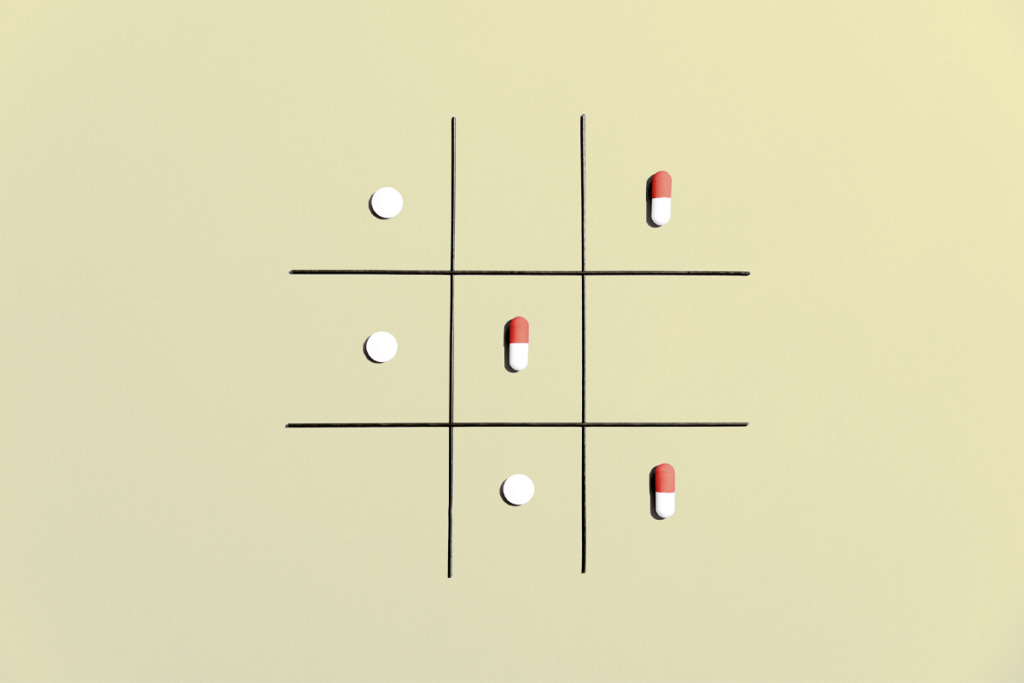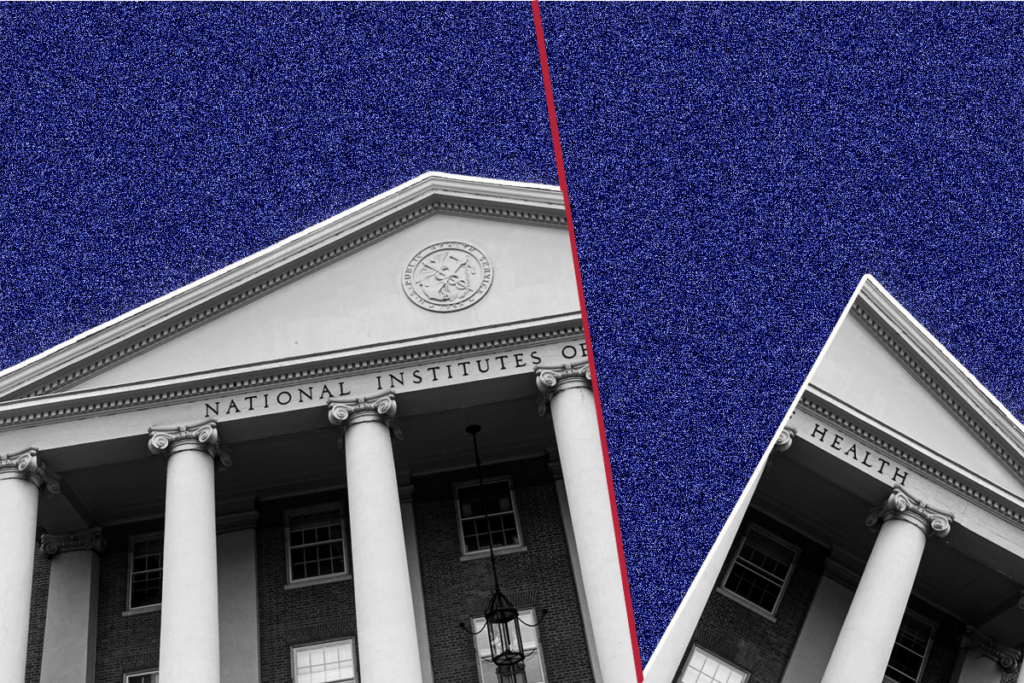It seemed to Peng Li like the mice were coughing, but that didn’t jive with the literature: Decades of studies demonstrated that mice don’t cough.
Li, research assistant professor at the University of Michigan Life Sciences Institute, was studying populations of neurons in the brainstem that control different aspects of breathing. The area is vital for breathing, but finer circuit and molecular-level details remained murky.
His group had conducted single-cell RNA sequencing on the nucleus of the solitary tract—a brainstem area that serves as a relay station for sensory signals coming from visceral organs—in mice and was now activating different groups of neurons in the area with optogenetics to determine what they did.
Activating some groups triggered breathing responses, which the team measured through a whole-body plethysmograph chamber, a device that detects pressure changes. One group triggered sighs, which the team investigated in a paper published last year; another led to apnea; and a third caused an inhalation, regardless of whether the animal was already inhaling or exhaling.
But one group of neurons, expressing the gene tachykinin 1 (TAC1), triggered a defensive respiratory response that looked a lot like coughing, Li recalls. “Initially, we were puzzled [by] what this breathing pattern is,” Li says. Because of the previous studies showing mice do not cough in response to the same substances that make humans cough, guinea pigs and cats became the dominant animal models. But “because we saw that breathing pattern, we said, ‘OK, why not give [it] a try ourselves?’” Li says.
Li and his team nebulized capsaicin, the active component in chili peppers, and added it to the recording chamber. The mice coughed, according to machine-learning-assisted analysis of the breathing responses. Three times as many TAC1 neurons were activated during the capsaicin-induced cough—shown through expression of c-FOS—than during a control experiment. Both inhibiting the TAC1 neurons through chemogenetics and genetically ablating them prevented mice from coughing in response to capsaicin but did not affect other breathing responses. The team published the resulting paper in July in Nature Neuroscience.
Combined with the group’s sigh study from last year, this work suggests that the brainstem contains distinct circuits for different breathing behaviors, rather than one agnostic circuit that orchestrates them all, Li says.
Through a series of viral vector tracing experiments, Li’s team demonstrated that mechanosensory and chemosensory neurons in the airways project to TAC1 neurons, which in turn project to several regions in the medulla, a brainstem area that controls the muscles in the larynx and abdomen. In other words, the TAC1 neurons coordinate the motor outputs needed to trigger a cough, the team concluded.
Overall, these results are “really compelling evidence” that TAC1 neurons act as a hub between the neurons that detect the reason to cough and the neurons that induce it, says Jack Feldman, professor of neurobiology at the University of California, Los Angeles, who was not involved in the study. Now that this “critical link” has been defined, the rest of the circuit is “ripe for investigation,” he says. The control center cells likely project to other areas that play a role in cough beyond muscle control, he adds. “Where are these neurons going, and when they get there, what are they doing?”
T
he study adds to a growing body of work indicating that mice can cough and provides “the most convincing evidence” to date, says Yin Liu, group leader at the Janelia Research Campus, who was not involved in the work.Mice did not cough in response to capsaicin in some previous papers, but the negative results may have been caused by inadequate detection techniques, says Donald Bolser, professor of physiological sciences at the University of Florida College of Veterinary Medicine. In one set of experiments Bolser and his colleagues conducted years ago, he says they used such large amounts of nebulized capsaicin that the researchers themselves began to cough, but their microphones could not pick up coughing sounds from mice like they could from guinea pigs. Later work showed that the mice did cough, but the behavior produced sounds in ultrasonic frequencies that standard microphones cannot detect.
Plus, many previous experiments were conducted in anesthetized mice, and anesthesia may alter an animal’s typical breathing responses, Liu says. The current work used awake animals and “did a more careful analysis” of respiratory patterns.
This “is just the tip of the iceberg,” Li says. Once the field accepts the mouse as a cough model, the animal’s rich genetic tool kit can be used to study each part of the circuit in greater detail, he says. The mouse is a “very important and powerful model to use moving forward.”






